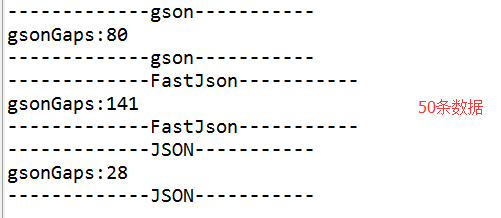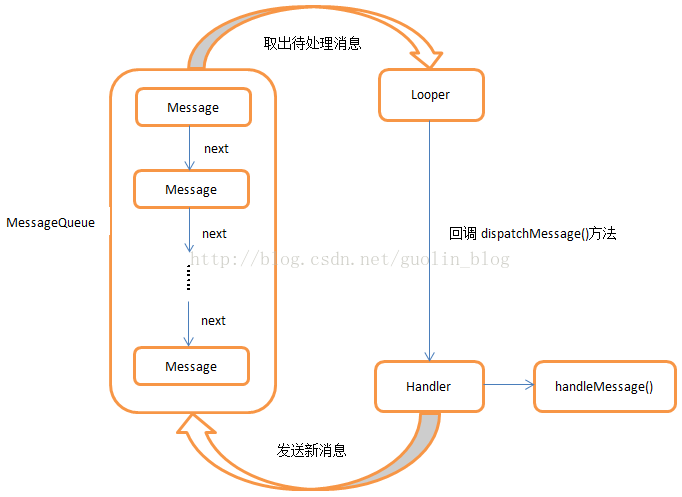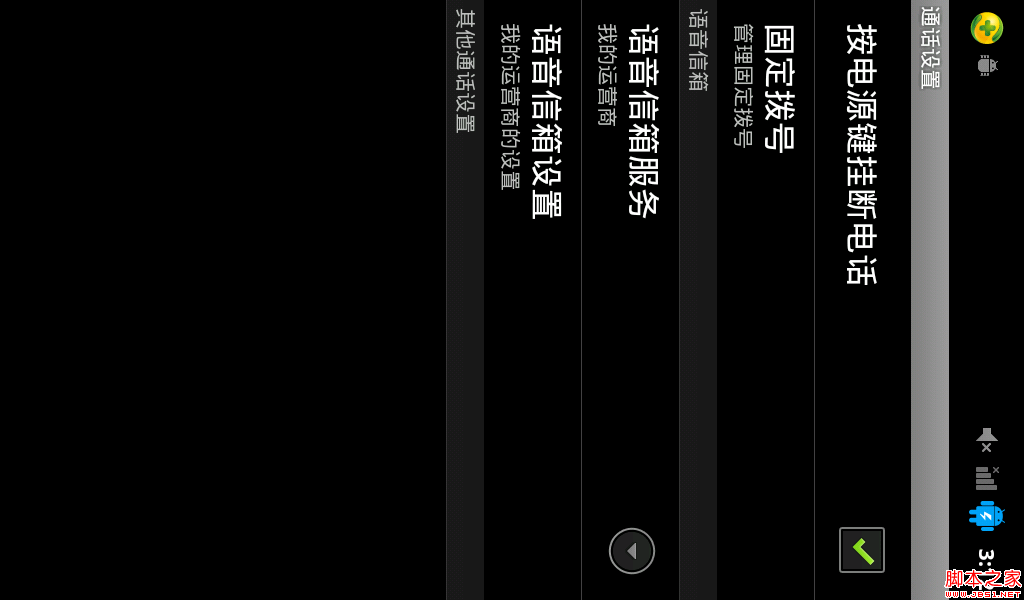實現原理
這種桌面懸浮窗的效果很類似與Widget,但是它比Widget要靈活的多。主要是通過WindowManager這個類來實現的,調用這個類的addView方法用於添加一個懸浮窗,updateViewLayout方法用於更新懸浮窗的參數,removeView用於移除懸浮窗。其中懸浮窗的參數有必要詳細說明一下。
WindowManager.LayoutParams這個類用於提供懸浮窗所需的參數,其中有幾個經常會用到的變量:
type值用於確定懸浮窗的類型,一般設為2002,表示在所有應用程序之上,但在狀態欄之下。
flags值用於確定懸浮窗的行為,比如說不可聚焦,非模態對話框等等,屬性非常多,大家可以查看文檔。
gravity值用於確定懸浮窗的對齊方式,一般設為左上角對齊,這樣當拖動懸浮窗的時候方便計算坐標。
x值用於確定懸浮窗的位置,如果要橫向移動懸浮窗,就需要改變這個值。
y值用於確定懸浮窗的位置,如果要縱向移動懸浮窗,就需要改變這個值。
width值用於指定懸浮窗的寬度。
height值用於指定懸浮窗的高度。
創建懸浮窗這種窗體需要向用戶申請權限才可以的,因此還需要在AndroidManifest.xml中加入
<uses-permission android:name="android.permission.SYSTEM_ALERT_WINDOW" />
<uses-permission android:name="android.permission.GET_TASKS" />
code
activity_main.xml
復制代碼
<LinearLayout xmlns:android="http://schemas.android.com/apk/res/android"
xmlns:tools="http://schemas.android.com/tools"
android:layout_width="fill_parent"
android:layout_height="fill_parent"
tools:context=".MainActivity"
android:orientation="vertical" >
<Button
android:id="@+id/start_float_window"
android:layout_width="fill_parent"
android:layout_height="wrap_content"
android:text="打開懸浮" >
</Button>
</LinearLayout>
復制代碼
float_window_small.xml,用於做為小懸浮窗的布局
復制代碼
<?xml version="1.0" encoding="UTF-8"?>
<LinearLayout
xmlns:android="http://schemas.android.com/apk/res/android"
android:id="@+id/small_window_layout"
android:layout_width="60dip"
android:layout_height="25dip"
android:background="@drawable/bg_small"
>
<TextView
android:id="@+id/percent"
android:layout_width="fill_parent"
android:layout_height="fill_parent"
android:gravity="center"
android:textColor="#ffffff"
/>
</LinearLayout>
復制代碼
float_window_big.xml,用於做為大懸浮窗的布局
復制代碼
<?xml version="1.0" encoding="UTF-8"?>
<LinearLayout xmlns:android="http://schemas.android.com/apk/res/android"
android:id="@+id/big_window_layout"
android:layout_width="200dip"
android:layout_height="100dip"
android:background="@drawable/bg_big"
android:orientation="vertical" >
<Button
android:id="@+id/close"
android:layout_width="100dip"
android:layout_height="40dip"
android:layout_gravity="center_horizontal"
android:layout_marginTop="12dip"
android:text="關閉懸浮窗" />
<Button
android:id="@+id/back"
android:layout_width="100dip"
android:layout_height="40dip"
android:layout_gravity="center_horizontal"
android:text="返回" />
</LinearLayout>
復制代碼
然後打開MainActivity.java,這是項目的主界面
復制代碼
@Override
protected void onCreate(Bundle savedInstanceState) {
super.onCreate(savedInstanceState);
setContentView(R.layout.activity_main);
Button startFloatWindow = (Button) findViewById(R.id.start_float_window);
startFloatWindow.setOnClickListener(new OnClickListener() {
@Override
public void onClick(View arg0) {
// 開啟服務
Intent intent = new Intent(MainActivity.this,
FloatWindowService.class);
startService(intent);
finish();
}
});
}
復制代碼
MainActivity的代碼就是對開啟懸浮窗的按鈕注冊了一個點擊事件,用於打開一個服務,然後關閉當前Activity。
新建一個名為FloatWindowService的類,這個類繼承自Service
復制代碼
public class FloatWindowService extends Service {
/**
* 用於在線程中創建或移除懸浮窗。
*/
private Handler handler = new Handler();
/**
* 定時器,定時進行檢測當前應該創建還是移除懸浮窗。
*/
private Timer timer;
/**
* 不是綁定的開啟服務
*/
@Override
public IBinder onBind(Intent intent) {
return null;
}
/**
* Service的生命周期中會調用此函數
*/
@Override
public int onStartCommand(Intent intent, int flags, int startId) {
// 開啟定時器,每隔0.5秒刷新一次
if (timer == null) {
timer = new Timer();
timer.scheduleAtFixedRate(new RefreshTask(), 0, 500);
}
return super.onStartCommand(intent, flags, startId);
}
/**
* Service終止
*/
@Override
public void onDestroy() {
super.onDestroy();
// Service被終止的同時也停止定時器繼續運行
timer.cancel();
timer = null;
}
/**
* 判斷桌面上懸浮框狀態
*
* @author sansung
*
*/
class RefreshTask extends TimerTask {
@Override
public void run() {
// 當前界面是桌面,且沒有懸浮窗顯示,則創建懸浮窗。
if (isHome() && !MyWindowManager.isWindowShowing()) {
handler.post(new Runnable() {
@Override
public void run() {
MyWindowManager
.createSmallWindow(getApplicationContext());
}
});
}
// 當前界面不是桌面,且有懸浮窗顯示,則移除懸浮窗。
else if (!isHome() && MyWindowManager.isWindowShowing()) {
handler.post(new Runnable() {
@Override
public void run() {
MyWindowManager
.removeSmallWindow(getApplicationContext());
MyWindowManager
.removeBigWindow(getApplicationContext());
}
});
}
// 當前界面是桌面,且有懸浮窗顯示,則更新內存數據。
else if (isHome() && MyWindowManager.isWindowShowing()) {
handler.post(new Runnable() {
@Override
public void run() {
MyWindowManager
.updateUsedPercent(getApplicationContext());
}
});
}
}
}
/**
* 判斷當前界面是否是桌面
*/
private boolean isHome() {
ActivityManager mActivityManager = (ActivityManager) getSystemService(Context.ACTIVITY_SERVICE);
List<RunningTaskInfo> rti = mActivityManager.getRunningTasks(1);
// 如果在桌面,輸出的是桌面的包名
// 不在桌面的話輸出的是打開的app的包名
// System.out.println("getHomes().contains(rti.get(0).topActivity.getPackageName())+++"+rti.get(0).topActivity.getPackageName());
return getHomes().contains(rti.get(0).topActivity.getPackageName());
}
/**
* 獲得屬於桌面的應用的應用包名稱
*
* @return 返回包含所有包名的字符串列表
*/
private List<String> getHomes() {
List<String> names = new ArrayList<String>();
PackageManager packageManager = this.getPackageManager();
Intent intent = new Intent(Intent.ACTION_MAIN);
intent.addCategory(Intent.CATEGORY_HOME);
List<ResolveInfo> resolveInfo = packageManager.queryIntentActivities(
intent, PackageManager.MATCH_DEFAULT_ONLY);
for (ResolveInfo ri : resolveInfo) {
// 桌面包名
// System.out.println("ri.activityInfo.packageName++++"+ri.activityInfo.packageName);
names.add(ri.activityInfo.packageName);
}
return names;
}
}
復制代碼
FloatWindowService的onStartCommand方法中開啟了一個定時器,每隔500毫秒就會執行RefreshTask。在RefreshTask當中,要進行判斷,如果手機當前是在桌面的話,就應該顯示懸浮窗,如果手機打開了某一個應用程序,就應該移除懸浮窗,如果手機在桌面的話,還應該更新內存使用百分比的數據。而當FloatWindowService被銷毀的時候,應該將定時器停止,否則它還會一直運行。
創建和移除懸浮窗,以及更新懸浮窗內的數據,都是由MyWindowManager這個類來管理的,比起直接把這些代碼寫在Activity或Service當中,使用一個專門的工具類來管理要好的多。不過要想創建懸浮窗,還是先要把懸浮窗的View寫出來。
新建一個名叫FloatWindowSmallView的類,繼承自LinearLayout。新建一個名叫FloatWindowBigView的類,也繼承自LinearLayout。
FloatWindowSmallView
復制代碼
public class FloatWindowSmallView extends LinearLayout {
/**
* 記錄小懸浮窗的寬度
*/
public static int viewWidth;
/**
* 記錄小懸浮窗的高度
*/
public static int viewHeight;
/**
* 記錄系統狀態欄的高度
*/
private static int statusBarHeight;
/**
* 用於更新小懸浮窗的位置
*/
private WindowManager windowManager;
/**
* 小懸浮窗的參數
*/
private WindowManager.LayoutParams mParams;
/**
* 記錄當前手指位置在屏幕上的橫坐標值
*/
private float xInScreen;
/**
* 記錄當前手指位置在屏幕上的縱坐標值
*/
private float yInScreen;
/**
* 記錄手指按下時在屏幕上的橫坐標的值
*/
private float xDownInScreen;
/**
* 記錄手指按下時在屏幕上的縱坐標的值
*/
private float yDownInScreen;
/**
* 記錄手指按下時在小懸浮窗的View上的橫坐標的值
*/
private float xInView;
/**
* 記錄手指按下時在小懸浮窗的View上的縱坐標的值
*/
private float yInView;
/**
* 構造函數
*
* @param context
* 上下文
*/
public FloatWindowSmallView(Context context) {
super(context);
// 得到windowManager
windowManager = (WindowManager) context
.getSystemService(Context.WINDOW_SERVICE);
LayoutInflater.from(context).inflate(R.layout.float_window_small, this);
View view = findViewById(R.id.small_window_layout);
viewWidth = view.getLayoutParams().width;
viewHeight = view.getLayoutParams().height;
TextView percentView = (TextView) findViewById(R.id.percent);
percentView.setText(MyWindowManager.getUsedPercentValue(context));
}
@Override
public boolean onTouchEvent(MotionEvent event) {
switch (event.getAction()) {
case MotionEvent.ACTION_DOWN:
// 手指按下時記錄必要數據,縱坐標的值都需要減去狀態欄高度
xInView = event.getX();
yInView = event.getY();
xDownInScreen = event.getRawX();
yDownInScreen = event.getRawY() - getStatusBarHeight();
xInScreen = event.getRawX();
yInScreen = event.getRawY() - getStatusBarHeight();
break;
case MotionEvent.ACTION_MOVE:
xInScreen = event.getRawX();
yInScreen = event.getRawY() - getStatusBarHeight();
// 手指移動的時候更新小懸浮窗的位置
updateViewPosition();
break;
case MotionEvent.ACTION_UP:
// 如果手指離開屏幕時,xDownInScreen和xInScreen相等,且yDownInScreen和yInScreen相等,則視為觸發了單擊事件。
if (xDownInScreen == xInScreen && yDownInScreen == yInScreen) {
openBigWindow();
}
break;
default:
break;
}
return true;
}
/**
* 將小懸浮窗的參數傳入,用於更新小懸浮窗的位置。
*
* @param params
* 小懸浮窗的參數
*/
public void setParams(WindowManager.LayoutParams params) {
mParams = params;
}
/**
* 更新小懸浮窗在屏幕中的位置。
*/
private void updateViewPosition() {
mParams.x = (int) (xInScreen - xInView);
mParams.y = (int) (yInScreen - yInView);
windowManager.updateViewLayout(this, mParams);
}
/**
* 打開大懸浮窗,同時關閉小懸浮窗。
*/
private void openBigWindow() {
MyWindowManager.createBigWindow(getContext());
MyWindowManager.removeSmallWindow(getContext());
}
/**
* 用於獲取狀態欄的高度。
*
* @return 返回狀態欄高度的像素值。
*/
private int getStatusBarHeight() {
if (statusBarHeight == 0) {
try {
Class<?> c = Class.forName("com.android.internal.R$dimen");
Object o = c.newInstance();
Field field = c.getField("status_bar_height");
int x = (Integer) field.get(o);
statusBarHeight = getResources().getDimensionPixelSize(x);
} catch (Exception e) {
e.printStackTrace();
}
}
return statusBarHeight;
}
}
復制代碼
其中,對這個View的onTouchEvent事件進行了重寫,用於實現拖動和點擊的效果。如果發現用戶觸發了ACTION_DOWN事件,會記錄按下時的坐標等數據。如果發現用戶觸發了ACTION_MOVE事件,則根據當前移動的坐標更新懸浮窗在屏幕中的位置。如果發現用戶觸發了ACTION_UP事件,會和ACTION_DOWN中記下的坐標對比,如果發現是相同的,則視為用戶對懸浮窗進行了點擊。點擊小懸浮窗則打開大懸浮窗,然後我們來實現大懸浮窗的View。
FloatWindowBigView
復制代碼
public class FloatWindowBigView extends LinearLayout {
/**
* 記錄大懸浮窗的寬度
*/
public static int viewWidth;
/**
* 記錄大懸浮窗的高度
*/
public static int viewHeight;
public FloatWindowBigView(final Context context) {
super(context);
LayoutInflater.from(context).inflate(R.layout.float_window_big, this);
View view = findViewById(R.id.big_window_layout);
viewWidth = view.getLayoutParams().width;
viewHeight = view.getLayoutParams().height;
Button close = (Button) findViewById(R.id.close);
Button back = (Button) findViewById(R.id.back);
close.setOnClickListener(new OnClickListener() {
@Override
public void onClick(View v) {
// 點擊關閉懸浮窗的時候,移除所有懸浮窗,並停止Service
MyWindowManager.removeBigWindow(context);
MyWindowManager.removeSmallWindow(context);
Intent intent = new Intent(getContext(),
FloatWindowService.class);
context.stopService(intent);
}
});
back.setOnClickListener(new OnClickListener() {
@Override
public void onClick(View v) {
// 點擊返回的時候,移除大懸浮窗,創建小懸浮窗
MyWindowManager.removeBigWindow(context);
MyWindowManager.createSmallWindow(context);
}
});
}
}
復制代碼
比起FloatWindowSmallView,FloatWindowBigView要簡單的多,其中只有兩個按鈕,點擊close按鈕,將懸浮窗全部移除,並將Service終止。單擊back按鈕則移除大懸浮窗,重新創建小懸浮窗。
現在兩個懸浮窗的View都已經寫好了,我們來創建MyWindowManager
復制代碼
public class MyWindowManager {
/**
* 小懸浮窗View的實例
*/
private static FloatWindowSmallView smallWindow;
/**
* 大懸浮窗View的實例
*/
private static FloatWindowBigView bigWindow;
/**
* 小懸浮窗View的參數
*/
private static LayoutParams smallWindowParams;
/**
* 大懸浮窗View的參數
*/
private static LayoutParams bigWindowParams;
/**
* 用於控制在屏幕上添加或移除懸浮窗
*/
private static WindowManager mWindowManager;
/**
* 用於獲取手機可用內存
*/
private static ActivityManager mActivityManager;
/**
* 創建一個小懸浮窗。初始位置為屏幕的右部中間位置。
*
* @param context
* 必須為應用程序的Context.
*/
public static void createSmallWindow(Context context) {
// 創建windowmanager
WindowManager windowManager = getWindowManager(context);
// 得到window長寬
int screenWidth = windowManager.getDefaultDisplay().getWidth();
int screenHeight = windowManager.getDefaultDisplay().getHeight();
if (smallWindow == null) {
smallWindow = new FloatWindowSmallView(context);
if (smallWindowParams == null) {
smallWindowParams = new LayoutParams();
smallWindowParams.type = LayoutParams.TYPE_PHONE;
smallWindowParams.format = PixelFormat.RGBA_8888;
smallWindowParams.flags = LayoutParams.FLAG_NOT_TOUCH_MODAL
| LayoutParams.FLAG_NOT_FOCUSABLE;
smallWindowParams.gravity = Gravity.LEFT | Gravity.TOP;
smallWindowParams.width = FloatWindowSmallView.viewWidth;
smallWindowParams.height = FloatWindowSmallView.viewHeight;
smallWindowParams.x = screenWidth;
smallWindowParams.y = screenHeight / 2;
}
// 配置
smallWindow.setParams(smallWindowParams);
// 在windowmanager中添加
windowManager.addView(smallWindow, smallWindowParams);
}
}
/**
* 將小懸浮窗從屏幕上移除。
*
* @param context
* 必須為應用程序的Context.
*/
public static void removeSmallWindow(Context context) {
if (smallWindow != null) {
WindowManager windowManager = getWindowManager(context);
windowManager.removeView(smallWindow);
smallWindow = null;
}
}
/**
* 創建一個大懸浮窗。位置為屏幕正中間。
*
* @param context
* 必須為應用程序的Context.
*/
public static void createBigWindow(Context context) {
WindowManager windowManager = getWindowManager(context);
int screenWidth = windowManager.getDefaultDisplay().getWidth();
int screenHeight = windowManager.getDefaultDisplay().getHeight();
if (bigWindow == null) {
bigWindow = new FloatWindowBigView(context);
if (bigWindowParams == null) {
bigWindowParams = new LayoutParams();
bigWindowParams.x = screenWidth / 2
- FloatWindowBigView.viewWidth / 2;
bigWindowParams.y = screenHeight / 2
- FloatWindowBigView.viewHeight / 2;
bigWindowParams.type = LayoutParams.TYPE_PHONE;
bigWindowParams.format = PixelFormat.RGBA_8888;
bigWindowParams.gravity = Gravity.LEFT | Gravity.TOP;
bigWindowParams.width = FloatWindowBigView.viewWidth;
bigWindowParams.height = FloatWindowBigView.viewHeight;
}
windowManager.addView(bigWindow, bigWindowParams);
}
}
/**
* 將大懸浮窗從屏幕上移除。
*
* @param context
* 必須為應用程序的Context.
*/
public static void removeBigWindow(Context context) {
if (bigWindow != null) {
WindowManager windowManager = getWindowManager(context);
windowManager.removeView(bigWindow);
bigWindow = null;
}
}
/**
* 更新小懸浮窗的TextView上的數據,顯示內存使用的百分比。
*
* @param context
* 可傳入應用程序上下文。
*/
public static void updateUsedPercent(Context context) {
if (smallWindow != null) {
TextView percentView = (TextView) smallWindow
.findViewById(R.id.percent);
percentView.setText(getUsedPercentValue(context));
}
}
/**
* 是否有懸浮窗(包括小懸浮窗和大懸浮窗)顯示在屏幕上。
*
* @return 有懸浮窗顯示在桌面上返回true,沒有的話返回false。
*/
public static boolean isWindowShowing() {
return smallWindow != null || bigWindow != null;
}
/**
* 如果WindowManager還未創建,則創建一個新的WindowManager返回。否則返回當前已創建的WindowManager。
*
* @param context
* 必須為應用程序的Context.
* @return WindowManager的實例,用於控制在屏幕上添加或移除懸浮窗。
*/
private static WindowManager getWindowManager(Context context) {
if (mWindowManager == null) {
mWindowManager = (WindowManager) context
.getSystemService(Context.WINDOW_SERVICE);
}
return mWindowManager;
}
/**
* 如果ActivityManager還未創建,則創建一個新的ActivityManager返回。否則返回當前已創建的ActivityManager。
*
* @param context
* 可傳入應用程序上下文。
* @return ActivityManager的實例,用於獲取手機可用內存。
*/
private static ActivityManager getActivityManager(Context context) {
if (mActivityManager == null) {
mActivityManager = (ActivityManager) context
.getSystemService(Context.ACTIVITY_SERVICE);
}
return mActivityManager;
}
/**
* 計算已使用內存的百分比,並返回。
*
* @param context
* 可傳入應用程序上下文。
* @return 已使用內存的百分比,以字符串形式返回。
*/
public static String getUsedPercentValue(Context context) {
String dir = "/proc/meminfo";
try {
FileReader fr = new FileReader(dir);
BufferedReader br = new BufferedReader(fr, 2048);
String memoryLine = br.readLine();
String subMemoryLine = memoryLine.substring(memoryLine
.indexOf("MemTotal:"));
br.close();
long totalMemorySize = Integer.parseInt(subMemoryLine.replaceAll(
"\\D+", ""));
long availableSize = getAvailableMemory(context) / 1024;
int percent = (int) ((totalMemorySize - availableSize)
/ (float) totalMemorySize * 100);
return percent + "%";
} catch (IOException e) {
e.printStackTrace();
}
return "懸浮窗";
}
/**
* 獲取當前可用內存,返回數據以字節為單位。
*
* @param context
* 可傳入應用程序上下文。
* @return 當前可用內存。
*/
private static long getAvailableMemory(Context context) {
ActivityManager.MemoryInfo mi = new ActivityManager.MemoryInfo();
getActivityManager(context).getMemoryInfo(mi);
return mi.availMem;
}
}
 Gson、FastJson、org.JSON到底哪一個效率更高,速度更快
Gson、FastJson、org.JSON到底哪一個效率更高,速度更快
 多媒體播放器02視頻播放器
多媒體播放器02視頻播放器
 [Android]簡略的Android消息機制源碼分析
[Android]簡略的Android消息機制源碼分析
 android 添加按(power鍵)電源鍵結束通話(掛斷電話)
android 添加按(power鍵)電源鍵結束通話(掛斷電話)